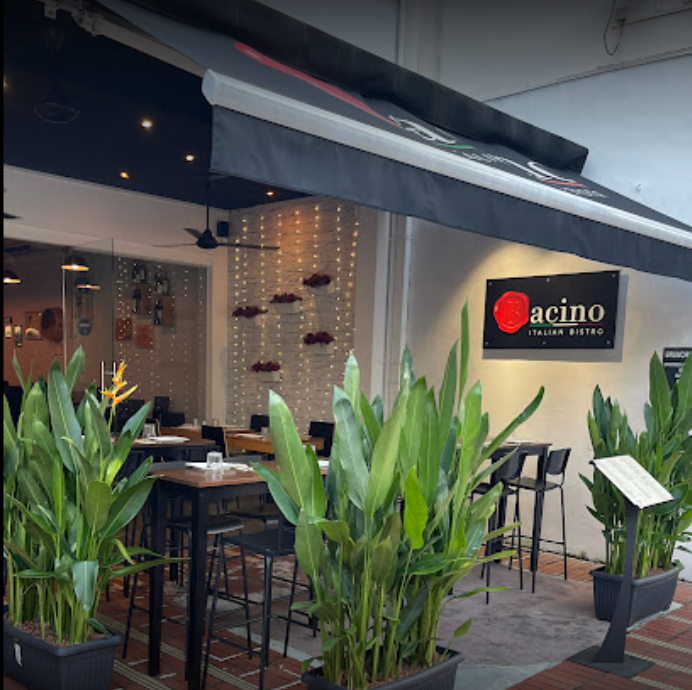Introduction
Creating the perfect Italian meal is more than just following a recipe; it’s about immersing yourself in an authentic dining experience that celebrates the rich tapestry of Italian culture.
From the bustling markets of Rome to the serene vineyards of Tuscany, Italian cuisine offers a symphony of flavors rooted in tradition and passion.
Italian food is more than just pasta and pizza. It’s a perfect combination of fresh ingredients, traditional techniques, and heartfelt customs. The beauty lies in its simplicity and the quality of its ingredients.
Imagine enjoying a perfectly prepared Saltimbocca alla Romana or indulging in an authentic Sicilian cannoli filled with creamy ricotta.
Traditional food customs play an important role in Italian dining. Whether it’s the relaxed pace of meals, the focus on family gatherings, or the careful pairing of wine with dishes, these traditions elevate every meal into an experience worth treasuring. They are the heart and soul of Italy’s culinary heritage.
For those eager to embark on this gastronomic journey, understanding and embracing these elements will pave the way for a truly authentic Italian dining experience. Ready to dive deeper? Let’s explore how to bring this magic to your table!
1. Techniques for Cooking Authentic Italian Food at Home
Creating authentic Italian food at home is like painting a masterpiece—each ingredient plays a crucial role.
Importance of Fresh Ingredients
Italian cuisine is known for its simple yet flavorful dishes that rely heavily on high-quality, fresh ingredients. The taste of biting into a Caprese salad with tomatoes that were just picked from the garden is unmatched. Freshness isn’t just a preference; it’s an obsession.
Here are some tips for using fresh ingredients in your Italian cooking:
- Tomatoes: Opt for vine-ripened varieties.
- Basil: Use freshly picked leaves, not dried.
- Cheese: Fresh mozzarella or burrata can elevate a dish.
Supporting Local Butchers and Farmers Markets
When it comes to meat in Italian dishes, quality is key. That’s why it’s worth building a relationship with your local butcher who can provide you with the best cuts for your recipes.
Here are some specific meat cuts to look out for:
- Pork Shoulder: Perfect for making porchetta, a traditional Italian roasted pork dish.
- Veal Shanks: Essential for cooking osso buco, a flavorful braised veal dish.
In addition to supporting local businesses, visiting farmers markets is also a great way to find fresh and seasonal vegetables and herbs for your Italian recipes.
Incorporating Imported Italian Packaged Foods
While fresh ingredients are preferred in Italian cooking, there are certain pantry staples that can add an authentic touch to your dishes and may be hard to find locally.
Here are some imported Italian packaged foods to consider:
- Pasta: Brands like Barilla or De Cecco provide that authentic texture and flavor.
- Olive Oil: Extra virgin olive oil from Italy can be a game-changer in your recipes.
- Canned Tomatoes: San Marzano tomatoes are perfect for sauces.
For those with dietary restrictions, there are also gluten-free pasta options available that can help you enjoy Italian cuisine without compromising your needs.
By following these techniques and using the right ingredients, you can bring the flavors of Italy into your own kitchen.
2. Mastering Key Cooking Techniques for an Authentic Dining Experience
Fresh Garlic and Herbs: The Soul of Italian Dishes
Fresh garlic and herbs are essential in many classic Italian recipes. Just think about the amazing smell that fills your kitchen when you sauté garlic in olive oil. It’s like magic! Fresh basil, oregano, and parsley can take a dish from ordinary to outstanding. If possible, try growing your own herb garden. It’s like having a little piece of Italy right at home.
Knife Skills: Precision is Key
Have you ever tried to slice a tomato only to end up squishing it? Learning proper knife skills can prevent such cooking disasters. Making precise cuts ensures that your ingredients cook evenly and also enhances the appearance of your dish. You don’t have to be a professional chef; just practice some basic techniques like dicing, julienning, and chiffonading. Both your ingredients and your fingers will appreciate it.
Wine: Not Just for Drinking
Don’t think of wine as just something to enjoy while you’re cooking (although that can be quite enjoyable). In Italian cooking, wine plays an important role in enhancing flavors. A splash of white wine can be used to deglaze a pan and scrape up all those tasty browned bits stuck at the bottom, while red wine adds richness to hearty sauces like Bolognese. Remember, if the wine tastes good enough to drink, it’s definitely good enough to use in your cooking too. Cheers! 🍷
3. Following Traditional Food Customs in Italy
When it comes to traditional Italian cuisine, there’s more than just the food itself—it’s also about the rituals and customs that surround it. Italians take their meals seriously, and it’s these century-old traditions that make dining an experience rather than a chore.
The Significance of Food Customs
- La Dolce Vita: Italians live by the philosophy of “the sweet life,” where meals are meant to be savored slowly with family and friends. This isn’t just about eating; it’s a celebration.
- Mealtime Etiquette: Each meal has its own set of customs. For example, breakfast is typically light, lunch is a leisurely affair often involving multiple courses, and dinner might start as late as 8 PM.
Centuries-Old Culinary Traditions
- Regional Diversity: Italy’s culinary landscape is incredibly diverse. From the seafood-rich dishes of Sicily to the hearty meat-based recipes from Tuscany, each region boasts its unique flavors and techniques.
- Seasonal Eating: Italians have been practicing farm-to-table long before it became trendy. Seasonal ingredients are key, reflecting what’s fresh and abundant during specific times of the year.
- Family Recipes: Many Italian families have recipes passed down through generations. These dishes often carry stories and memories, making them a crucial part of family gatherings.
Understanding these food customs elevates your cooking and dining experience, transforming it into something genuinely Italian.
4. Creating the Ultimate Italian Dining Experience at Your Table
Tips for Setting the Ambiance
Creating the ultimate dining experience at home involves more than just delicious food. It’s about transporting yourself and your guests straight to an Italian trattoria. Here’s how:
- Lighting: Soft, warm lighting can make a world of difference. Think candles or dimmable lights.
- Music: A playlist with classic Italian tunes like Andrea Bocelli or instrumental mandolins sets the perfect backdrop.
- Table Setting: Use rustic tableware, cloth napkins, and maybe even a checkered tablecloth for that authentic vibe.
Guide to Wine Pairings with Italian Dishes
Wine is to Italian food what peanut butter is to jelly. Here are some foolproof pairings:
- Pasta with Tomato Sauce: A robust Chianti or Sangiovese.
- Seafood Dishes: Crisp white wines like Pinot Grigio or Vermentino.
- Rich Meat Dishes: Bold reds like Barolo or Aglianico.
- Cheese Platters: Sparkling wines such as Prosecco or Franciacorta.
The Art of Providing Impeccable Service
Good service can elevate a meal from good to unforgettable. Here’s the secret sauce:
- Timing: Serve courses at a leisurely pace. Italians enjoy their meals without rushing.
- Presentation: Arrange dishes thoughtfully. Garnish with fresh herbs for that extra flair.
- Interaction: Be attentive but not overbearing. Share stories about the dishes – it adds a personal touch.
Transform your home dining into an exquisite Italian experience that charms all senses. Buon appetito!
5. The Embrace of Fresh Ingredients: A Pillar of Italian Cuisine
Italian cuisine is practically synonymous with fresh ingredients. Picture yourself in a bustling Italian market, surrounded by the vibrant colors of fresh tomatoes, fragrant basil, and golden olive oil. These aren’t just elements of a meal; they are the heart and soul of Italian cooking. Italians believe that food should be as fresh as possible, which is why many recipes call for ingredients that are in season and locally sourced.
Role of Fresh Ingredients in Italian Cuisine
- Tomatoes: Whether it’s sun-ripened San Marzano tomatoes for your Marinara sauce or juicy cherry tomatoes for a Caprese salad, freshness is key.
- Herbs: Fresh herbs like basil, parsley, and rosemary bring an unmistakable aroma and flavor to dishes.
- Cheese: Think about mozzarella di bufala or Parmigiano-Reggiano—both taste infinitely better when they’re fresh.
Overview of the Farm-to-Table Concept
The farm-to-table concept isn’t just a trend in Italy; it’s a way of life that goes back centuries. Here’s how it works:
- Local Farms: Many Italian restaurants and homes source their produce directly from nearby farms.
- Seasonal Eating: Menus change according to what’s available each season, ensuring ingredients are at their peak.
- Sustainability: This approach supports local farmers and reduces the carbon footprint associated with long-distance food transportation.
By embracing these principles, you can elevate your Italian dining experience from good to unforgettable.
Marketing Authentic Italian Restaurants: Strategies to Attract Diners
Effective marketing is essential for any Italian restaurant aiming to fill tables with eager diners. Here are some key strategies:
Importance of Effective Marketing
Italian restaurants often rely on word-of-mouth, but in today’s digital age, a robust marketing strategy can make or break your business. A well-executed plan can attract new customers and retain loyal patrons, ensuring your restaurant stays buzzing.
Tips for Managing Online Menus
- Keep it Updated: Regularly update your online menu to reflect seasonal dishes and specials.
- High-Quality Photos: Invest in professional food photography to showcase dishes in the best light.
- Detailed Descriptions: Provide detailed descriptions of each dish, including ingredients and preparation methods.
- User-Friendly Layout: Ensure the online menu is easy to navigate on both desktop and mobile devices.
Utilizing Social Media Platforms
Social media isn’t just for selfies and cat videos—it’s a powerful tool for showcasing your restaurant’s offerings. Here’s how:
- Instagram: Use Instagram Stories to share behind-the-scenes looks at your kitchen, chefs, and daily specials.
- Facebook Events: Create events for special dinners, wine tastings, or cooking classes.
- Twitter: Engage with customers by responding to their tweets and sharing user-generated content.
- TikTok: Share fun and engaging videos that highlight unique aspects of your restaurant.
Effective use of social media platforms can turn casual browsers into dedicated diners who can’t wait to experience your authentic Italian cuisine.
Conclusion
Now it’s your turn to step into the kitchen and whip up your very own perfect Italian meal. Embrace the authentic dining experience by using fresh ingredients, mastering key cooking techniques, and following traditional food customs.
Imagine the aroma of fresh garlic wafting through your home as you prepare a feast fit for an Italian trattoria. Don’t forget to set the ambiance with some cozy lighting and perhaps a bottle of Chianti.
Buon appetito!














































































